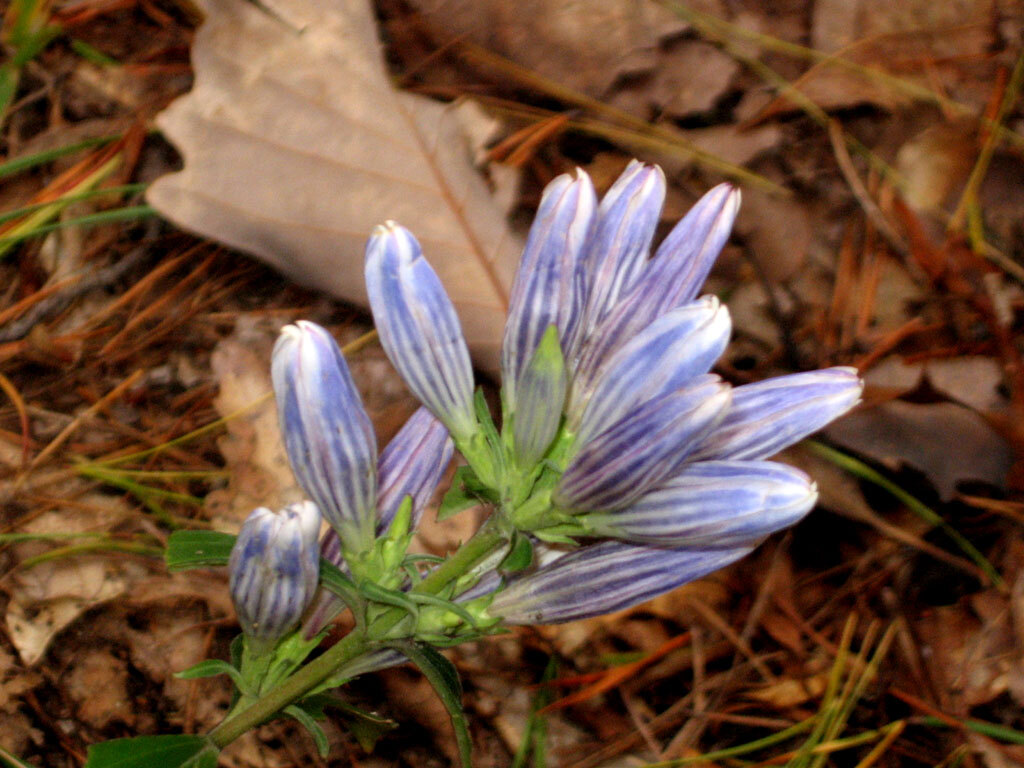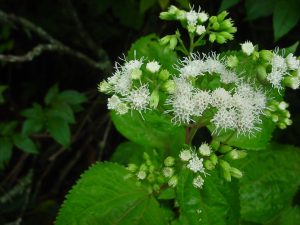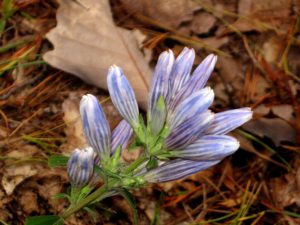
Have you ever heard of “milk sickness”? What could something like that possibly have to do with wildflowers found in Great Smoky Mountains National Park? Read on to find out.

The first wildflower we shall examine is white snakeroot. White snakeroot generally grows from one to four feet tall, and its white blooms appear from July through October. One can find the plant blooming on many trails in the park including West Prong Trail and Lumber Ridge Trail.
Prior to the formation of the national park, in the early spring residents of Cades Cove would take their cattle to one of the three balds overlooking the cove, where they would leave the cattle until fall under the care of a herder (who was normally paid 50 cents per head for his services). The reason for this was the fertility of the soil in the cove: it was far more productive to use the fields for growing crops instead of grazing livestock.
In the fall the cattle would be driven back to the cove. During these journeys back to their homesteads, farmers would have to be very cautious to keep the cattle from eating the foliage of white snakeroot. The plant contains a toxin that causes an illness known as milk sickness. If a person drinks milk from cattle that have eaten white snakeroot, they can be poisoned. At one time, milk sickness was considered the leading cause of death in the US. President Abraham Lincoln’s mother died from milk sickness. Additionally, the cattle themselves can be poisoned by consuming this plant.
Native Americans used the plant to treat fever, diarrhea, urinary tract issues, and snakebites. One source reported that smoke produced from burning the plant can be used like smelling salts to treat an unconscious person.

Mountain gentian is the second wildflower that will be examined in this issue. It can grow up to 24 inches tall, and the pale blue or violet striped blooms appear September through October. Lumber Ridge, Cove Mountain, and Miry Ridge Trails are where I have found the best displays of these blooms. The blooms remind me of old-fashioned Christmas light bulbs.
Native Americans and early settlers reportedly used this plant to aid digestion and to stimulate one’s appetite. Bumblebees have to push their way into the narrow opening at the top of the blooms to get to the nectar, and it is reported that some bees will actually chew holes in the side of the blooms to gain easier access.
The 2023 wildflower season is rapidly coming to a close, and very quickly winter will be upon us. Hopefully, many of you will jump on the wildflower express train while there is still time to do so. May you have many uplifting wildflowering experiences in your national park in the remaining days of 2023 and beyond.
Subscribe to get the latest posts sent to your email.
The Great Smokies Welcome Center is located on U.S. 321 in Townsend, TN, 2 miles from the west entrance to Great Smoky Mountains National Park. Visitors can get information about things to see and do in and around the national park and shop from a wide selection of books, gifts, and other Smokies merchandise. Daily, weekly, and annual parking tags for the national park are also available.